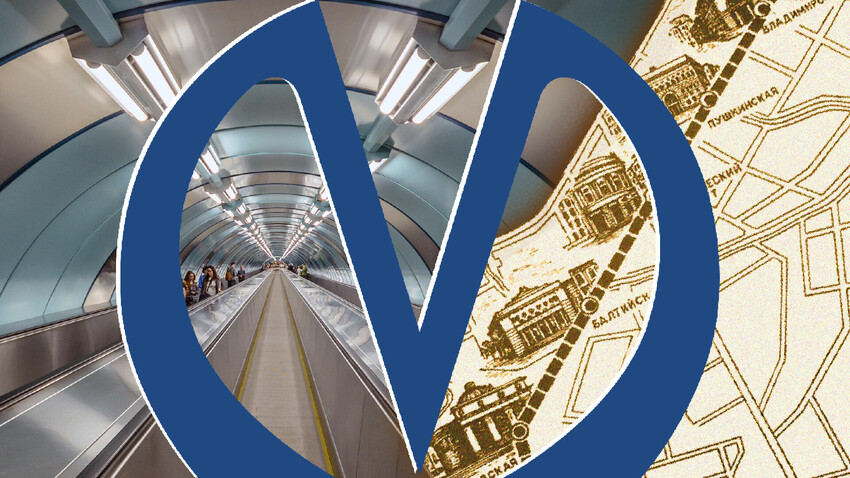
The idea to build a tunnel in St. Petersburg first appeared at the beginning of the 19th century. In 1814, Emperor Alexander I met French engineer Marc Brunel in London. The latter offered the Russian tsar to connect Vasilievsky Island with the Admiralty side by building a tunnel under the Neva River. For this project, the engineer invented a tunneling shield in 1818.
However, the idea was postponed; after the death of Alexander I, it was simply abandoned: instead, it was decided to make due with bridges. So, Brunel used his tunneling shield to build a tunnel under the River Thames.
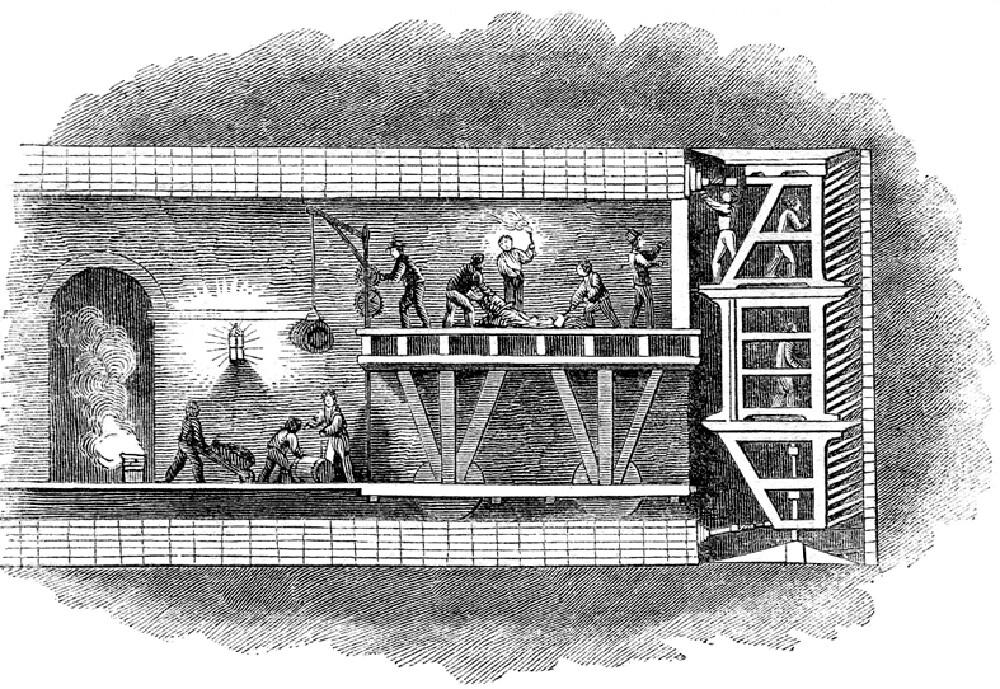
A diagram of the tunnelling shield used to construct the Thames Tunnel ---- Public Domain
Public DomainSince then, his invention has been used to build subways on all continents. The London tunnel allowed the English to launch a subway system in 1863 for the first time in the world.
At the end of the 19th and the beginning of the 20th century, there was discussion of building railway overpasses over roads and canals in St. Petersburg. However, only in 1914, did the talk of constructing a subway really begin to gain traction. After many deliberations, its construction finally commenced in 1941; however, due to the Great Patriotic War, it was delayed until 1945. Its first stretch was put into operation in 1955 – 20 years after the Moscow Metro.
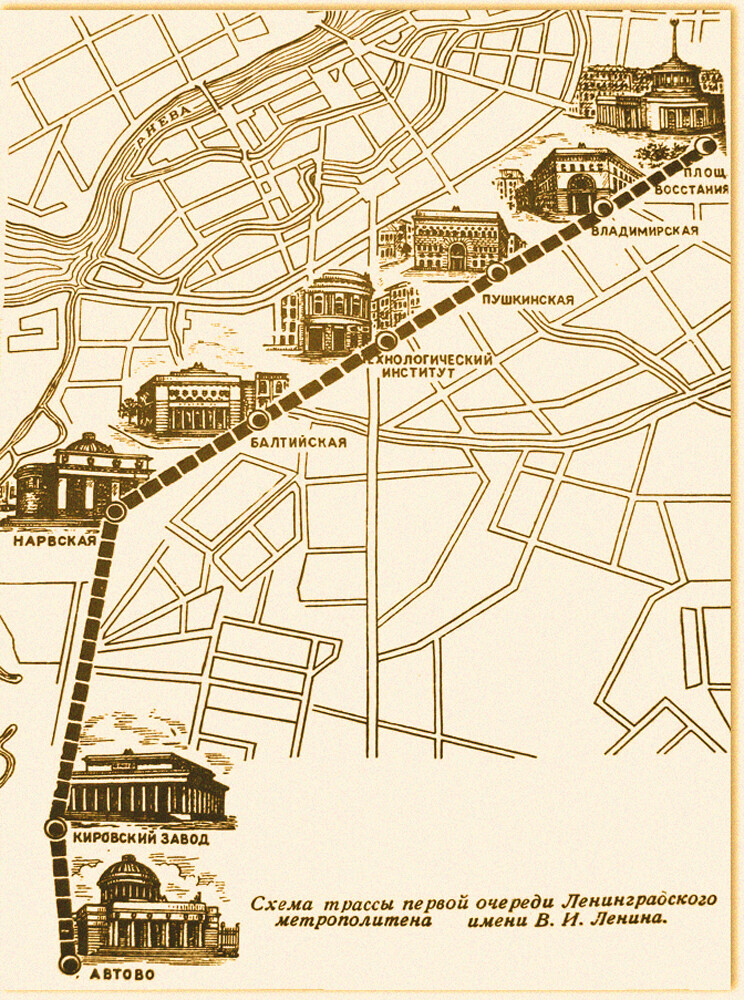
First stretch of the St. Petersburg subway system
metro.spb.ruThe St. Petersburg Metro is the deepest in the world by average depth. It’s unsurprising that, at the level of 86 meters below ground, the deepest station in the country is located – Admiralteyskaya station. The longest escalator in the world – with a length of 137.4 meters – leads to its platform. But, even that was too short to reach the train. So, the station has two escalators.
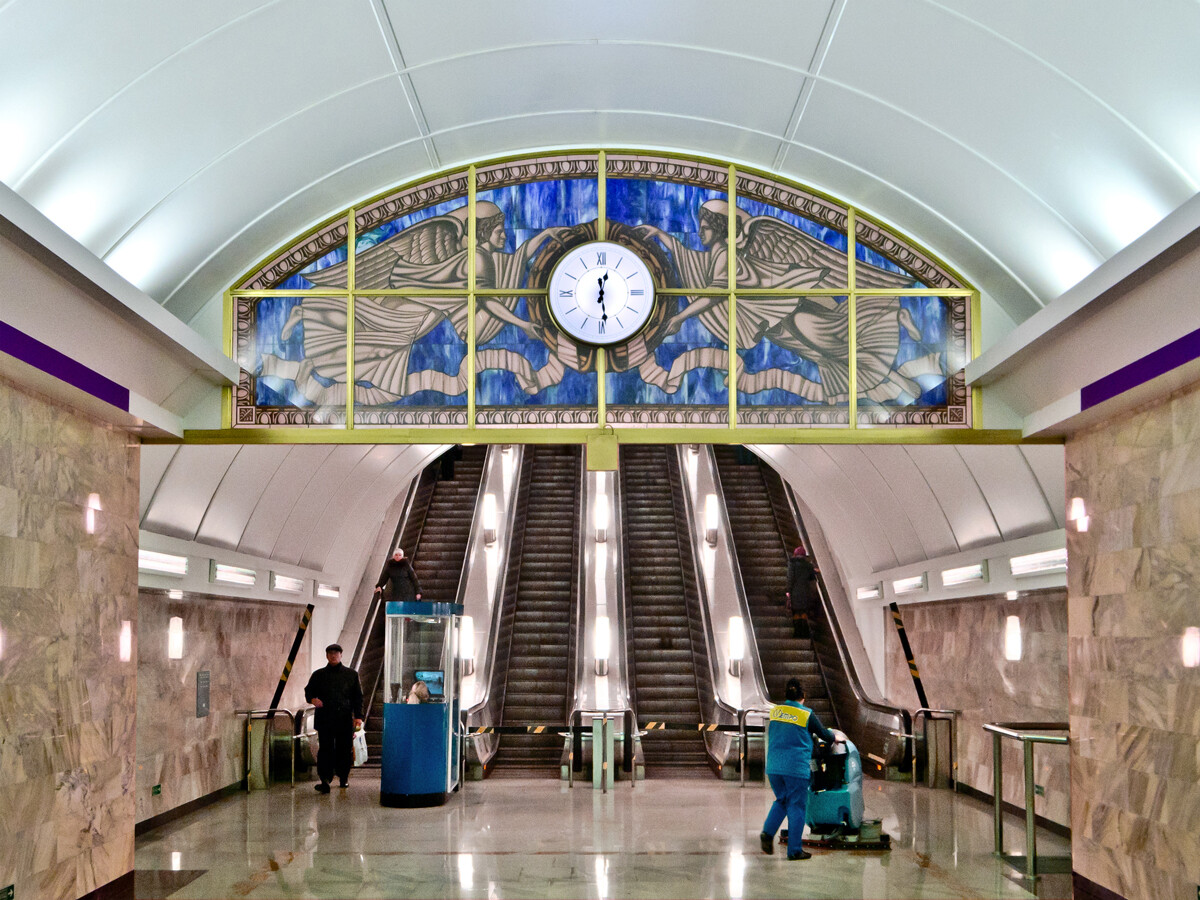
Admiralteyskaya station
CC BY-SA 3.0The Admiralteyskaya station was built back in 1997, but it only opened in 2011: For more than 10 years, engineers considered where to put the surface entrance. So, for 14 years, trains passed through Admiralteyskaya station without stopping; because of that, it was dubbed the ‘ghost station’.
Sportivnaya is another unusual station. In 2015, a second exit from it was opened that is located on the other side of the Neva River. At a depth of 10 meters below the bottom of the river, a 300-meter passenger tunnel was dug out, connecting Vasilievsky and Petrogradsky islands. It was the first time travelators (moving walkways) were used underground in Russia.
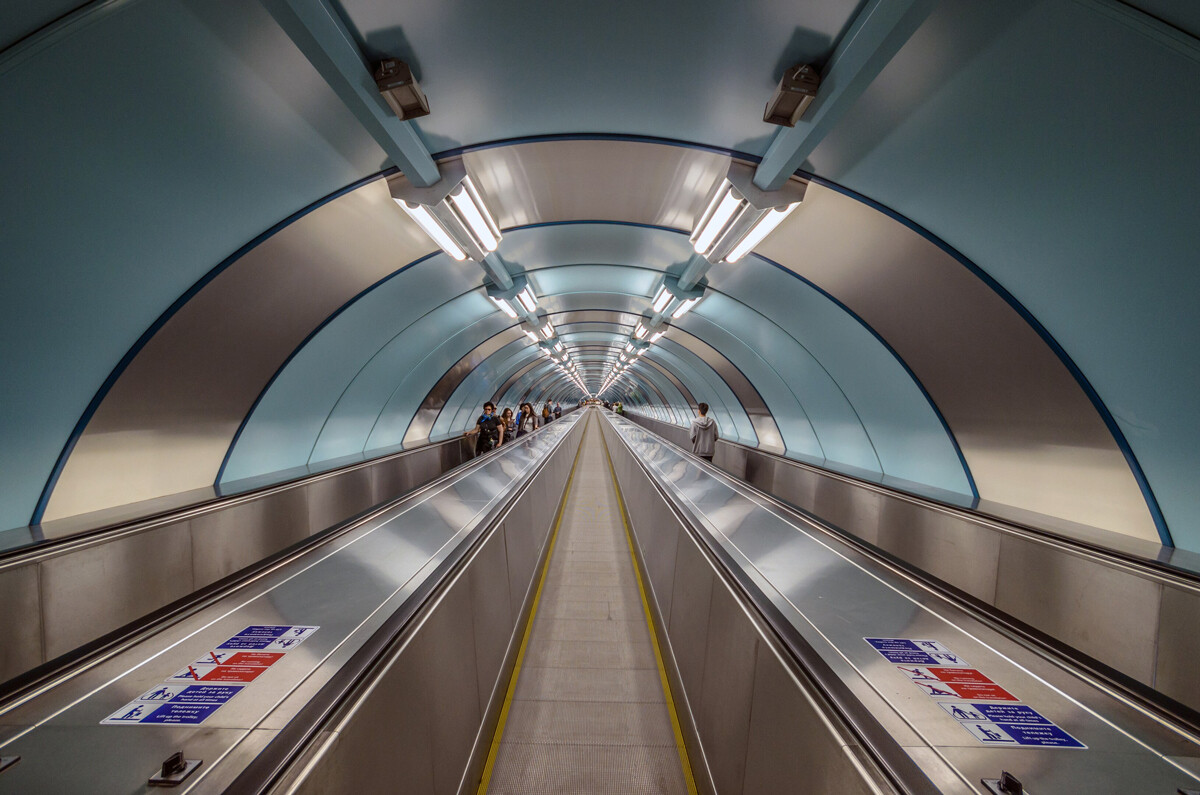
Sportivnaya station. Travelator
Alex 'Florstein' Fedorov (CC BY-SA 4.0)It is also the only two-tier station in the city that can receive trains from two lines, upper and lower, on four tracks – left and right – simultaneously. However, one side is not yet fully operational. This option was added for the potential construction of a future ring line that would also run through this station. So, on both the upper and lower tiers, trains are currently only in operation on one side.
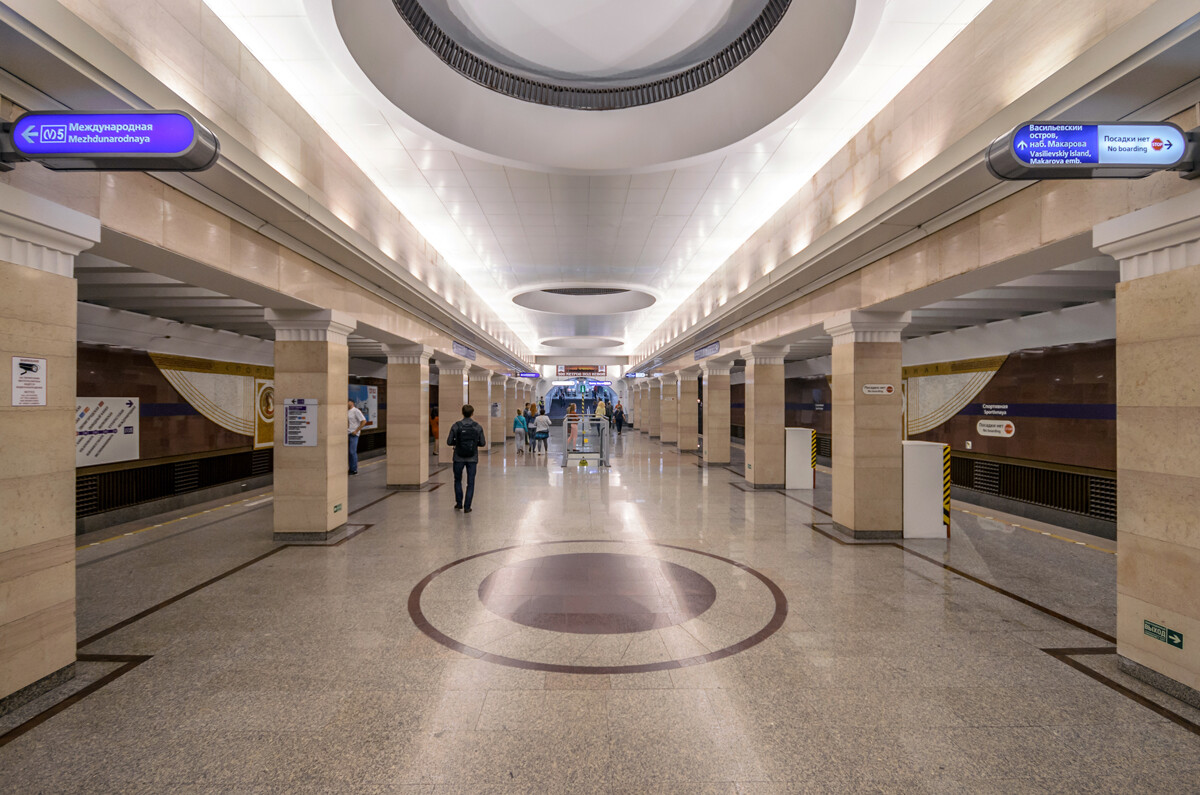
Sportivnaya station
Alex 'Florstein' Fedorov (CC BY-SA 4.0)Tekhnologichesky Institut is one of St. Petersburg Metro’s oldest stations. It was launched in 1955 as part of the first line of stations. In 1961, the first cross-platform transfer hub in the history of the Soviet subway system was created there.

Technologichesky Institut station
Alex 'Florstein' Fedorov (CC BY-SA 4.0)It means that each of the two platforms services both blue and red metro lines. If you travel from north to south or vice versa, you simply need to walk to the other side of the platform to change the line during a transfer.
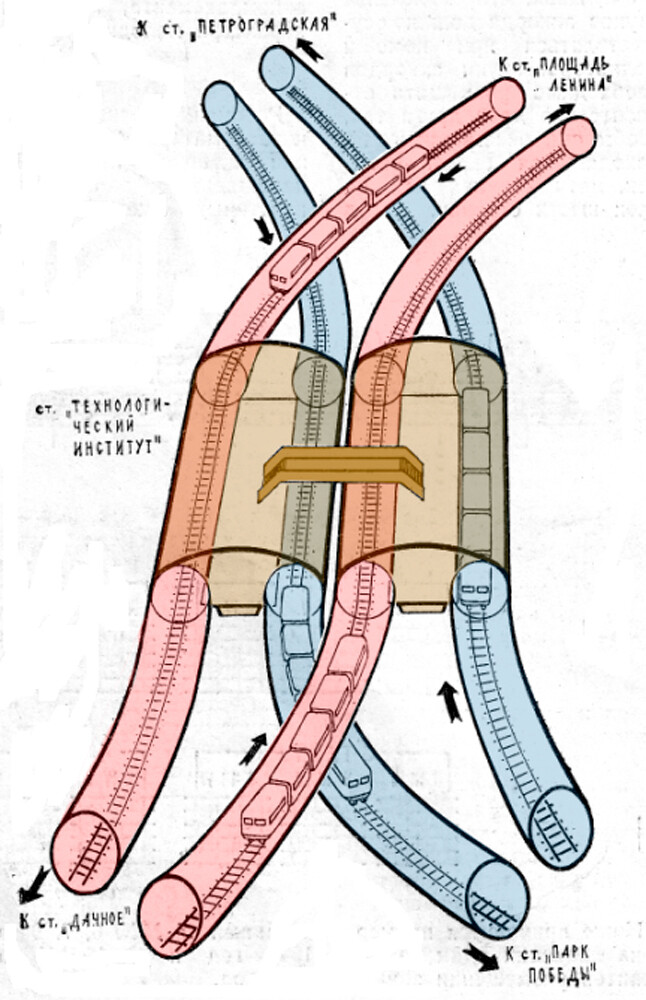
For the first time in the world, “closed-type” stations appeared in St. Petersburg. Their feature is that you can only get on the train after stationary platform doors open that are nicknamed by locals as ‘horizontal elevator’ doors. The Moscow Metro, meanwhile, does not have them at any of its stations.
Park Pobedy station became the first to use such platform doors. It was put into operation in 1961. Over 11 years, by 1972, 10 such stations had been built in the city – on the blue and green lines. They were cheaper in construction and safer for passengers; however, they turned out to be more complex in operation.
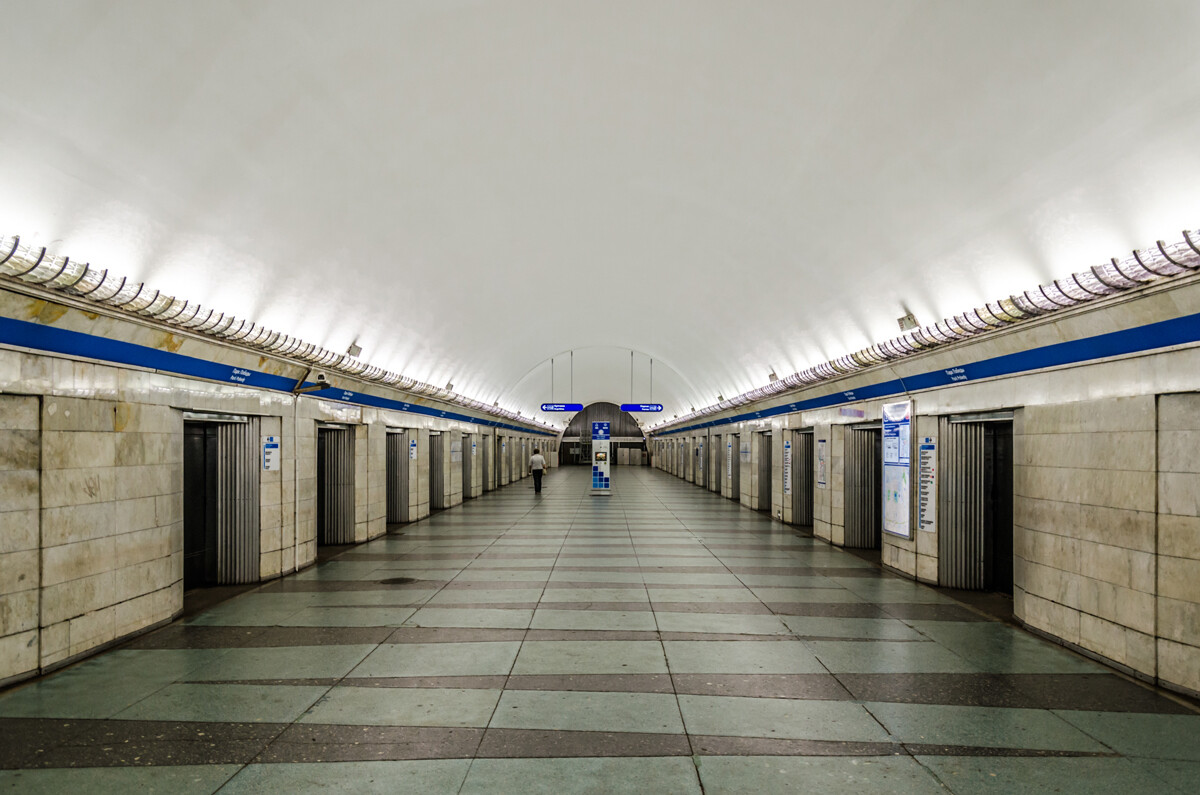
Park Pobedy station
Alex 'Florstein' Fedorov (CC BY-SA 4.0)The thing is, the train driver has to “aim” to stop the train exactly opposite the doors: if he misses a couple of meters, he’ll have to reverse, which takes additional time. Moreover, the ‘horizontal elevator’ doors require the design of new trains with a proper distance between their doors. That’s, incidentally, why different train models are deployed on different subway lines. Finally, the maintenance of the ‘elevator’ platform doors themselves requires additional funding. So the concept was abandoned for future stations.
Dear readers,
Our website and social media accounts are under threat of being restricted or banned, due to the current circumstances. So, to keep up with our latest content, simply do the following:
If using any of Russia Beyond's content, partly or in full, always provide an active hyperlink to the original material.
Subscribe
to our newsletter!
Get the week's best stories straight to your inbox